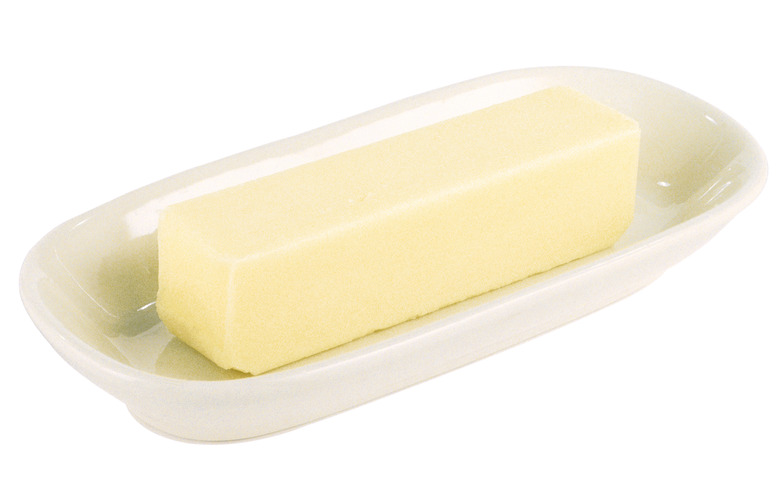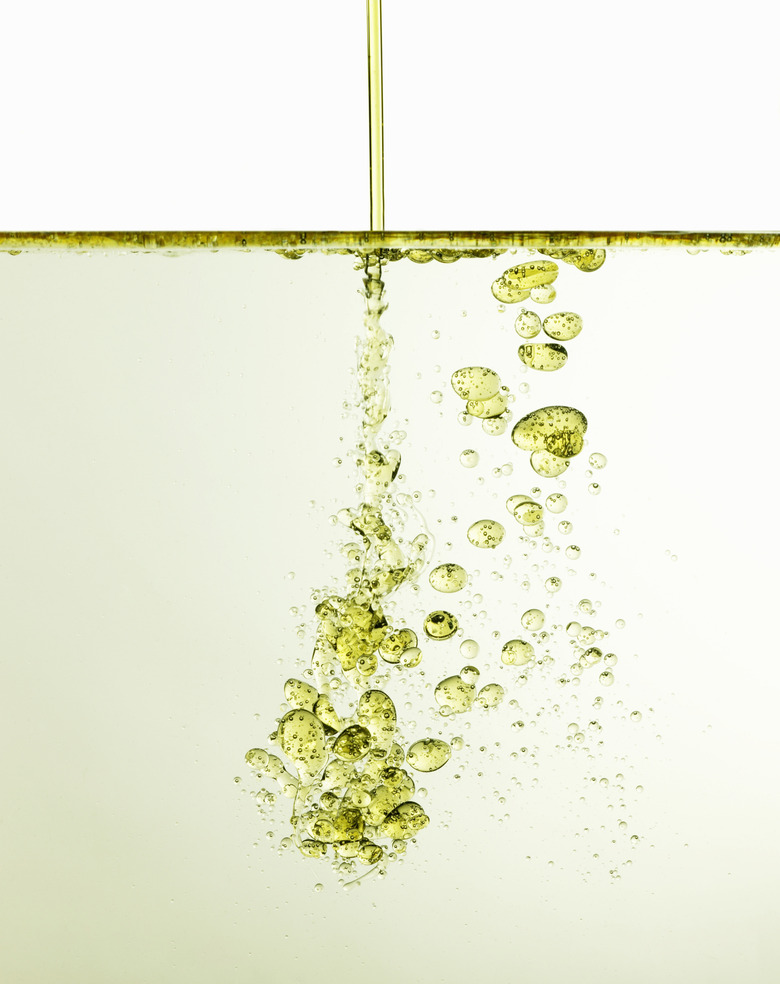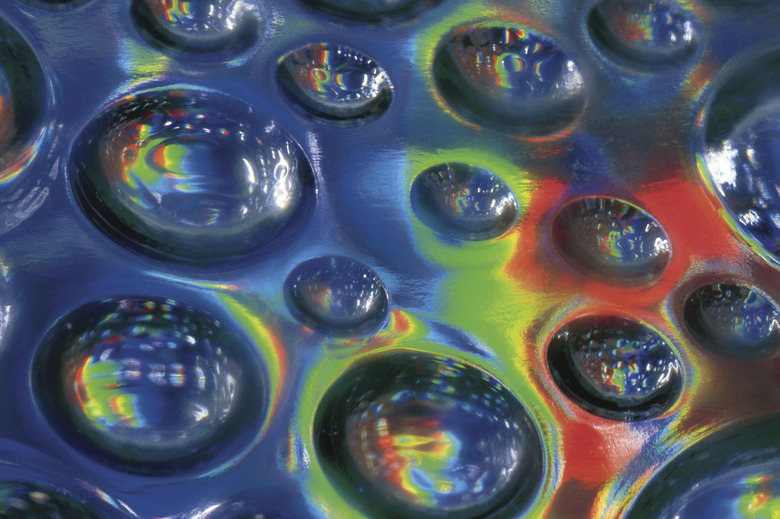What Is A Hydrocarbon Chain's Relationship To Fats In Biology?
Fats are made of triglycerides and are generally soluble in organic solvents and are insoluble in water. Hydrocarbon chains in triglycerides determine the structure and functionality of fats. The water-resistance of the hydrocarbons make them insoluble in water and also help in the formation of micelles, which are spherical formations of fat in aqueous solutions. Hydrocarbons also play a role in the melting points of fat through saturation, or the number of double bonds present between the carbon atoms of hydrocarbons.
What are Fats?
What are Fats?
Fats fall under the category of lipids that are generally soluble in organic solvents and are insoluble in water. Fats can be either liquid, like oil, or solid, like butter, at room temperature. The difference between oil and butter is due to the saturation of fatty acid tails. What makes fats different from other lipids is the chemical structure and physical properties. Fats serve as an important source of energy storage and insulation.
Structure of Fats
Structure of Fats
Fats consist of triesters of glycerol attached to fatty acid tails made out of hydrocarbons. Because there are three fatty acids for every glycerol, fats are often called triglycerides. The hydrocarbon chain that makes up fatty acids makes the tail end of the molecule hydrophobic, or water resistant, while the glycerol head is hydrophilic, or "water-loving." These properties are due the polarity of the molecules that make up each side. The hydrophobicity is due to the non-polar characteristics of the carbon-carbon and carbon-hydrogen bonds in hydrocarbon chains. The hydrophilic characteristic of glycerol is due to the hydroxyl groups, which make the molecule polar and readily mixes with other polar molecules, such as water.
Hydrocarbons and Micelles
Hydrocarbons and Micelles
One of the unusual properties of fats is the ability to emulsify. Emulsification is the main concept behind soap, which can interact with both polar water and non-polar dirt particles. The polar head of the fatty acid interacts with the water and the non-polar tails can interact with dirt. This emulsification can form micelles — balls of fatty acids — where the polar heads make up the outside layer and the hydrophobic tails form the inside layer. Without hydrocarbons, micelles would not be possible, as the hydrophobicity threshold of critical micelle concentration, or cmc, plays an important role in the formation of micelles. After the hydrophobicity of hydrocarbons reach a certain point in a polar solvent, the hydrocarbons automatically bundle together. The polar heads push outward to interact with the polar solvent and all polar molecules are excluded from the interior volume of the micelle as non-polar dirt particles and hydrocarbons fill in the interior space.
Saturated vs. Unsaturated Fats
Saturated vs. Unsaturated Fats
Saturation refers to the number of double bonds present in the hydrocarbon tail. Some fats have no double bonds and have the maximum number of hydrogen atoms attached to the hydrocarbon tail. Also known as saturated fats, these fatty acids are straight in structure and tightly packed together to form a solid at room temperature. Saturation also determines the physical state and melting points of the fatty acids. For instance, while saturated fats are solids, due to their structure at room temperature, unsaturated fats, such as oils, have bends in their hydrocarbon tails from double bonding in their carbon-to-carbon bonds. The bends cause the oils to be liquids or semi-solids in room temperature. Therefore, saturated fats have higher melting points due to the straight structure of their hydrocarbon tails. Double bonds in unsaturated fats make them easier to break down at lower temperatures.
Cite This Article
MLA
Santhosh, Lakshmi. "What Is A Hydrocarbon Chain's Relationship To Fats In Biology?" sciencing.com, https://www.sciencing.com/hydrocarbon-chains-relationship-fats-biology-6143/. 24 April 2017.
APA
Santhosh, Lakshmi. (2017, April 24). What Is A Hydrocarbon Chain's Relationship To Fats In Biology?. sciencing.com. Retrieved from https://www.sciencing.com/hydrocarbon-chains-relationship-fats-biology-6143/
Chicago
Santhosh, Lakshmi. What Is A Hydrocarbon Chain's Relationship To Fats In Biology? last modified March 24, 2022. https://www.sciencing.com/hydrocarbon-chains-relationship-fats-biology-6143/


